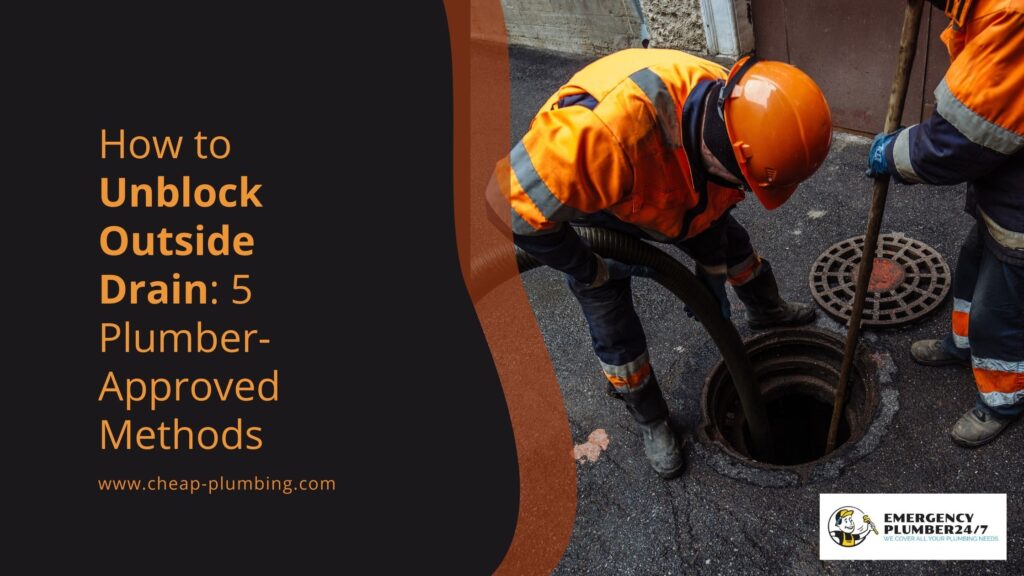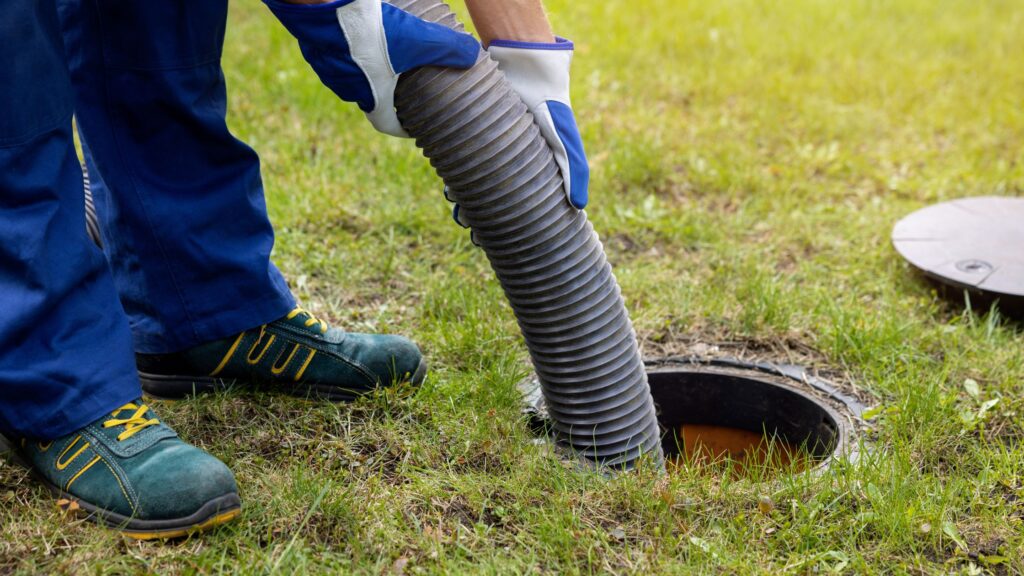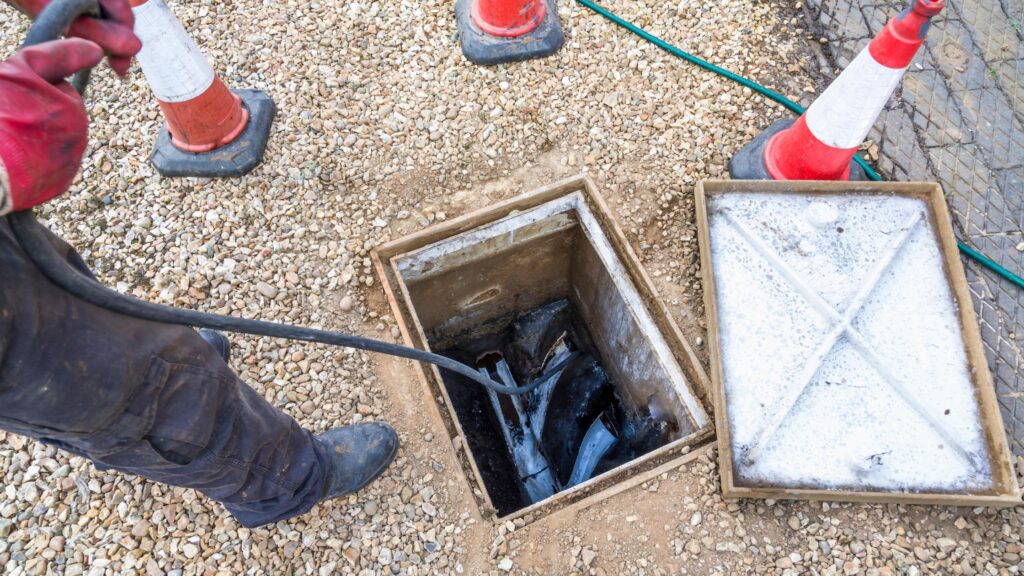Blocked outside drains are a common issue in Croydon, often caused by debris, grease buildup, or tree roots. If left untreated, a blocked drain can lead to flooding and property damage. In this guide, we will explore five plumber-approved methods to help you unblock outside drain efficiently.

What Does It Mean to Unblock Outside Drain?
Unblocking an outside drain means clearing any obstruction that stops water from flowing properly through the drainage system. Outdoor drains can become blocked due to a variety of reasons, such as accumulated leaves, dirt, grease, or even invasive tree roots growing into the pipes. Knowing how to unblock outside drain efficiently can help maintain a healthy plumbing system and prevent costly repairs.
When a drain is clogged, water cannot drain away as intended, leading to several issues:
- Potential property damage due to water overflowing onto pathways, driveways, or even seeping into the foundation of a home.
- Standing water around the blocked area, which can attract pests and cause flooding.
- Bad odors caused by trapped debris decomposing in the drain.
Unblocking a drain involves using specific methods, such as drain rods, hot water, or high-pressure water jetting, to remove the obstruction and restore normal water flow. Regular maintenance and prompt action can help prevent serious plumbing problems and costly repairs in the future.
Common Causes of a Blocked Outside Drain
Before we dive into the solutions, let’s understand why your outside drain might be blocked:
| Cause | Description |
|---|---|
| Leaves & Debris | Accumulation of leaves, dirt, and litter can clog the drain. |
| Grease & Fat | Cooking grease solidifies and blocks water flow. |
| Tree Roots | Roots infiltrate drains, causing blockages. |
| Collapsed Pipes | Structural damage can obstruct the drainage system. |
| Foreign Objects | Items like wipes, plastic, and other debris may get stuck. |

5 Effective Methods to Unblock Outside Drain
These five methods are effective for unblocking an outside drain, depending on the type of blockage. Here’s a breakdown of how each method works and why it is useful:
- Use a Drain Rod
- Best for: Solid blockages like leaves, mud, and debris.
- How it works: A drain rod is a long, flexible tool designed to break up blockages. By inserting it into the drain and twisting or pushing, you can dislodge stuck materials.
- Why it’s effective: It physically breaks apart the obstruction, allowing water to flow again.
- Tip: Always wear gloves to protect against contamination from dirty water or debris.
- Boiling Water and Detergent
- Best for: Blockages caused by grease and fat buildup.
- How it works: Hot water melts and softens grease, while detergent helps break it down and carry it away.
- Why it’s effective: It dissolves stubborn grease clogs without damaging pipes.
- Tip: If the blockage is severe, you may need to repeat the process a few times.
- Baking Soda and Vinegar
- Best for: Minor clogs and removing unpleasant odors.
- How it works: The reaction between baking soda and vinegar creates fizzing that loosens debris. After 30 minutes, flushing with hot water washes away the loosened particles.
- Why it’s effective: This natural method helps maintain drains without harsh chemicals.
- Tip: Regular use of this method can prevent future clogs.
- High-Pressure Water Jetting
- Best for: Stubborn blockages and even tree root intrusions.
- How it works: A high-pressure water jet blasts away blockages with powerful water force. This is particularly useful for outdoor drains clogged with thick mud or roots.
- Why it’s effective: It clears out debris thoroughly without the need for chemicals.
- Tip: If you don’t have access to a pressure washer, a plumber can perform professional water jetting.
- Enzyme-Based Drain Cleaners
- Best for: Organic matter like food waste, leaves, and natural debris.
- How it works: Enzymes digest and break down organic blockages over several hours.
- Why it’s effective: Unlike harsh chemical cleaners, enzyme cleaners are safe for pipes and the environment.
- Tip: Avoid chemical drain cleaners, as they can weaken pipes and cause long-term damage.
How to Prevent Outside Drain Blockages
| Preventive Measure | Description |
| Regular Cleaning | Flush your drain with hot water weekly. |
| Drain Covers | Install covers to prevent debris from entering. |
| Proper Waste Disposal | Avoid pouring grease or food scraps down drains. |
| Tree Maintenance | Trim trees near drainage lines to prevent root intrusion. |
| Professional Inspection | Get annual drain inspections for early detection of issues. |
FAQs: People Also Ask
1. How do I know if my outside drain is blocked?
Signs include: slow drainage, bad odors, gurgling sounds, or water pooling around the drain.
2. Can I use bleach to unblock an outside drain?
Bleach may help with minor clogs but is not effective for major blockages. Enzyme-based cleaners are a safer alternative.
3. When should I call a professional plumber?
If DIY methods fail, or if you suspect tree root intrusion or pipe collapse, contact a plumber immediately.

Conclusion
Unblocking an outside drain doesn’t have to be complicated. By using these five plumber-approved methods, you can restore your drainage system efficiently. If the blockage persists, don’t hesitate to contact Cheap Plumbing for expert assistance in Croydon.
Stay proactive by following preventive measures to avoid future drain problems. For 24/7 plumbing support, reach out to a trusted emergency plumber in your area!
